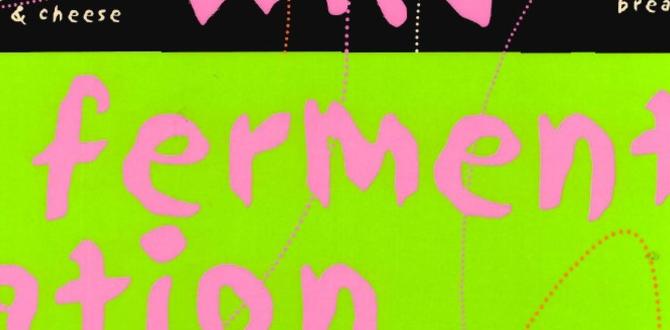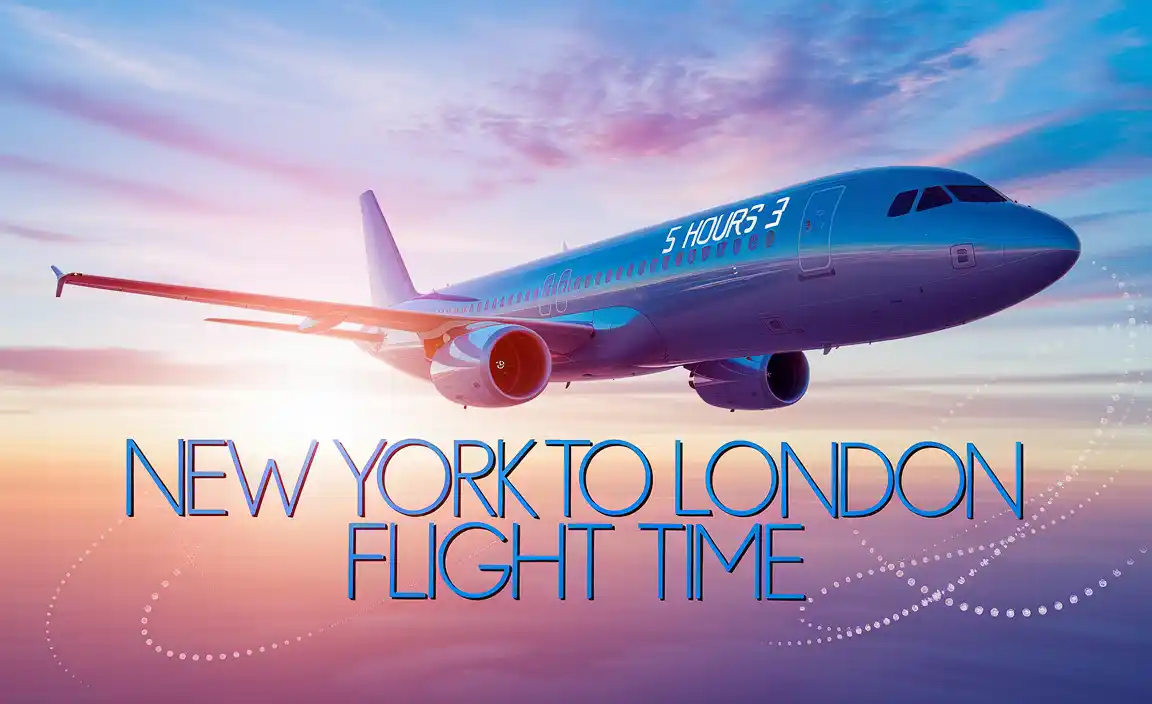Embark on your Bergen adventure with confidence! This guide offers essential tips covering what to pack, how to get around, must-see attractions, and local insights for a stress-free, unforgettable first visit to Norway’s scenic gateway.
Bergen, Norway is a city that truly captures the heart. Nestled between seven mountains and the sparkling sea, it’s a postcard-perfect destination brimming with charm. But for first-time visitors, planning can feel a little daunting. You might wonder about the weather, what to wear, or how to best experience all this beautiful city has to offer. Don’t let the planning stress dim your excitement! This guide is designed to make your first trip to Bergen smooth, enjoyable, and wonderfully memorable. We’ll break down everything you need to know, from packing the right essentials to maximizing your time exploring its wonders. Get ready to discover the magic of Bergen with ease!
Your Essential Bergen First-Timers Guide
Welcome to Bergen! This vibrant Norwegian city is a treasure trove of culture, history, and breathtaking natural beauty. As a first-time visitor, you’re in for a treat. This guide is packed with practical advice to ensure your trip is as seamless and enjoyable as possible. We’ll cover everything from understanding the famously changeable weather to navigating local transport and experiencing the best of Bergen’s unique attractions. Let’s dive in!
Understanding Bergen’s Unique Climate
Bergen is renowned for its rain. It’s a vital part of its lush, green landscape, and experiencing a bit of drizzle is part of the authentic Bergen charm. The good news is that this often means the weather can change rapidly, so sunny spells are also common. Dressing in layers is your best strategy.
What to Pack for Bergen
Packing smartly ensures you’re ready for anything Bergen’s weather throws your way. Comfort and practicality should be your main focus.
Waterproof Outerwear: A good quality waterproof and windproof jacket is an absolute must. Look for one with a hood.
Water-Resistant Footwear: Comfortable, broken-in walking shoes or boots with good grip are essential. Waterproofing is a huge bonus.
Layering Clothing: Pack a mix of thin, breathable layers like thermal tops, t-shirts, and sweaters. This allows you to adjust to temperature changes throughout the day.
Warm Accessories: A scarf, gloves, and a warm hat can be a lifesaver, especially during cooler months or for windy excursions.
Waterproof Pants (Optional but Recommended): Especially if you plan on hiking or spending significant time outdoors, waterproof trousers can be a game-changer.
Backpack: A small, waterproof backpack is perfect for carrying essentials like an umbrella, a water bottle, snacks, and your camera.
Umbrella: While good outerwear is key, a compact umbrella offers extra protection.
Quick-Dry Towel: Handy for unexpected splashes or drying off after a shower.
Comfortable Travel Essentials: If you need them, consider packing adult diapers or child diapers for long travel days or peace of mind. Brands like Depends or reusable options can offer discreet comfort, ensuring your focus remains on enjoying the sights. For parents managing little ones, reliable child diapers are crucial for stress-free outings.
Best Times to Visit Bergen
While Bergen is beautiful year-round, different seasons offer unique experiences.
Summer (June – August): The warmest months with the longest daylight hours. Ideal for hiking and outdoor activities. Expect more crowds and higher prices.
Spring (April – May): The city awakens with colorful blooms, and the weather becomes milder. Fewer tourists than summer.
Autumn (September – October): Beautiful fall foliage and a crisp atmosphere. Can be rainy, but also offers stunning photographic opportunities.
Winter (November – March): Cold, dark, and often snowy. Magical if you want to experience a cozy Nordic winter, but outdoor activities are limited. Fewer tourists and lower prices.
Navigating Bergen: Getting Around Like a Local
Bergen is a very walkable city, especially its central areas. However, for longer distances or reaching attractions outside the immediate downtown, public transport is efficient and easy to use.
Public Transportation Options
ByBane (Trams): The modern tram system connects the city center to areas like Flesland Airport and further out. It’s a convenient way to cover longer distances. You can purchase tickets at machines, kiosks, or via the local transport app.
Buses: An extensive bus network covers the city and surrounding areas. If you’re heading to attractions not on the tram line, buses are your go-to.
Ferries and Boats: Essential for exploring the fjords and nearby islands. Numerous tour operators and public ferry services are available from the harbor.
Taxis: Available but can be expensive. Best used for short trips or when public transport isn’t convenient.
Walking: The most enjoyable way to explore the compact city center, Bryggen, and the fish market.
Getting to and from Bergen Airport (BGO)
Bergen Airport, Flesland (BGO) is well-connected to the city center.
Bybanen (Tram): This is often the most affordable and convenient option. Line 1 of the Bybanen connects directly from the airport to the city center (Byparken). The journey takes about 45 minutes.
Flybussen (Airport Bus): Several companies operate express buses that run frequently to various points in the city center. They are generally comfortable and a bit faster than the tram, but more expensive.
Taxi: The quickest option, but also the most expensive. The journey takes around 20-30 minutes depending on traffic.
Traveler Comfort with Adult and Child Diapers
For travelers prioritizing comfort and security, especially on long journeys or during active sightseeing, discreet personal care solutions are readily available. Many pharmacies (apotek) in Bergen stock a range of adult diapers and child diapers. If you require specific brands or types, especially for extended travel needs or sensitive skin, it’s advisable to purchase these in advance from your local pharmacy or online. Reputable online retailers specializing in adult incontinence products offer a wide selection, ensuring you have the right products like absorbent adult diapers or reliable child diapers for stress-free exploration, whether you’re navigating the fjords or enjoying a cozy café.
Must-See Attractions in Bergen
Bergen offers a wealth of attractions that cater to every interest. Here are some of the absolute essentials for your first visit.
Bryggen Hanseatic Wharf
A UNESCO World Heritage Site, Bryggen is the historic heart of Bergen. Its colorful wooden buildings, dating back to the medieval period, lean charmingly against each other. Wander through the narrow alleyways, explore the small shops, galleries, and museums, and soak in the atmosphere of a bygone era.
Mount Fløyen and the Fløibanen Funicular
For breathtaking panoramic views of Bergen, its surrounding islands, and the fjords, take the Fløibanen funicular up Mount Fløyen. At the top, you’ll find walking trails, a restaurant, a playground, and stunning viewpoints. It’s a perfect escape for nature lovers and families alike. The funicular station is conveniently located near the fish market.
The Fish Market (Fisketorget)
Located in the heart of the city, the Fish Market is a lively and bustling hub. While it’s a historic landmark, it’s also a great place to sample fresh seafood, try local delicacies, and pick up souvenirs. Even if you don’t plan to buy, it’s a vibrant sensory experience.
Bergenhus Fortress
One of the oldest and best-preserved stone fortifications in Norway, Bergenhus Fortress is a significant historical site. Explore Håkon’s Hall and the Rosenkrantz Tower, which offer insights into Norway’s royal past. The grounds are also a pleasant place for a stroll.
KODE Art Museums
KODE is comprised of four art museums located in the city center. They house impressive collections of works by Norwegian artists, including Edvard Munch and Nikolai Astrup, as well as international art and design exhibitions. It’s a cultural deep-dive into Norway’s artistic heritage.
Fjord Cruises and Boat Tours
No trip to Bergen is complete without experiencing the majestic fjords. Numerous day trips and cruises depart from Bergen’s harbor, taking you through stunning landscapes of steep cliffs, waterfalls, and charming villages. Popular options include tours to the Sognefjord or the Hardangerfjord. Consider booking these in advance, especially during peak season.
Experiencing Bergen’s Culinary Scene
Bergen offers a delicious array of culinary experiences, from fresh seafood to traditional Norwegian dishes.
Must-Try Foods
Fresh Seafood: Given its coastal location, seafood is a highlight. Look for salmon, cod, and shrimp dishes.
Raspeballer (Komle): A traditional Norwegian dish of potato dumplings, often served with pork and sausage. A hearty and warming meal, typically enjoyed on Wednesdays.
Waffles (Vafler): Norwegian waffles are thin and heart-shaped, usually served with sour cream and jam. A delightful treat any time of day.
Brunost (Brown Cheese): A sweet, caramel-like cheese often enjoyed on bread or waffles.
Where to Eat
Fish Market: For fresh, casual seafood.
Bryggen: Several restaurants offer traditional Norwegian cuisine with historic ambiance.
Downtown Restaurants: Explore the streets around Torgallmenningen for a wide variety of options, from traditional to international cuisine. For a truly memorable experience, consider restaurants like Cornelius Sjømatrestaurant (requiring a boat trip) or Pingvinen, known for its traditional Norwegian dishes.
Practical Tips for a Smooth Trip
Beyond the usual travel advice, a few specific tips can make your Bergen journey even better.
Currency: The currency is the Norwegian Krone (NOK). Credit and debit cards are widely accepted everywhere, but it’s useful to have a small amount of cash for very small purchases or local markets.
Language: Norwegian is the official language. English is widely spoken and understood, especially in tourist areas, hotels, and restaurants.
Tipping: Tipping is not mandatory in Norway. Service is usually included in the bill. If you receive exceptional service, a small tip is appreciated but not expected.
Power Adapters: Norway uses the standard European two-pin plug (Type C and F). If you’re coming from outside Europe, you’ll need an adapter. The voltage is 230V. Ensure your electronics are compatible or have a voltage converter if needed.
Stay Connected: Consider getting a local SIM card or an eSIM for affordable data if your phone plan is not suitable for international travel. Many cafés and public spaces offer free Wi-Fi.
Book in Advance: For popular attractions, fjord tours, and accommodation, especially during peak season (summer), booking in advance is highly recommended to avoid disappointment.
Embrace the Rain: Seriously, don’t let a little rain dampen your spirits! Pack your gear, put on a smile, and enjoy the moody, beautiful scenery. Sometimes the most atmospheric photos come on a drizzly day.
Budgeting for Your Bergen Trip
Norway, in general, can be an expensive destination. Being prepared will help you manage your budget effectively.
Here’s a general idea of costs for key items:
| Item | Estimated Cost (NOK) | Notes |
|---|---|---|
| Accommodation (Mid-Range Hotel) | 1500 – 2500 per night | Prices vary by season. Hostels and Airbnb offer cheaper alternatives. |
| Eating Out (Mid-Range Restaurant Meal) | 400 – 700 per person | Can be significantly higher for fine dining. |
| Coffee/Pastry | 60 – 100 | Café prices. |
| Public Transport Single Fare (City) | 40 – 60 | Consider day passes or travel cards for savings. |
| Fløibanen Funicular (Round Trip) | 200 – 250 | Adult fare. |
| Fjord Cruise (Half-Day Tour) | 800 – 1500 | Prices vary by length and destination. |
| Museum Entrance Fee | 150 – 250 |
Tips for Saving Money:
Utilize public transportation over taxis.
Pack snacks and a reusable water bottle.
Look for free activities like walking tours (tip-based) or exploring parks.
Consider visiting during the shoulder seasons (spring or autumn) for lower accommodation rates.
If traveling with family, look into package deals for attractions.
For parents needing discreet personal care items, buying larger packs of adult or child diapers before you travel, or researching local discount supermarkets, can offer cost savings.
Understanding Local Etiquette
Norwegians are generally polite and reserved. Here are a few points of etiquette to keep in mind:
Punctuality: Being on time for appointments or reservations is important. Punctuality is highly valued.
Queuing: Norwegians are diligent queue-ers. Wait your turn patiently.
Public Transport: Keep noise levels down and avoid loud phone conversations. Offer your seat to elderly passengers, pregnant women, or those with young children.
Respect for Nature: If you’re hiking, stick to marked trails, don’t disturb wildlife, and take all your litter with you. Norway has a strong culture of environmental respect, and policies like the Nature Diversity Act reflect this.
Home Visits: If invited to someone’s home, it’s polite to bring a small gift, such as flowers, chocolates, or a bottle of wine.
Frequently Asked Questions (FAQs)
Q1: How much time do I need to see Bergen?
A: For a good overview, including major sights and a fjord trip, 2-3 full days is recommended. If you want to deeply explore museums or hike extensively, consider 4-5 days.
Q2: Is Bergen expensive to visit?
A: Yes, Norway is generally considered a high-cost destination. However, by planning ahead, utilizing public transport, and looking for budget-friendly food options, you can manage your expenses.
Q3: What is the best way to get around Bergen?
A: The city center is very walkable. For longer distances, the Bybanen (tram) and buses are efficient. Fjord tours typically depart from the harbor.
Q4: Do I need to book everything in advance?
A: It’s wise to book accommodation, popular fjord tours, and maybe the Fløibanen funicular in advance, especially during summer, to secure your spot and often get better prices.
Q5: What if I need adult or child diapers during my trip?
A: You can find adult and child diapers in most pharmacies (Apotek) in Bergen. For specific brands or larger quantities, it’s best to purchase them beforehand from your local store or online retailers.
Q6: Is it always raining in Bergen?
A: Bergen is known for its rain, but it’s not constantly raining. The weather is changeable, so you can experience sunshine, clouds, and rain all in one day. Waterproof gear is key!
Q7: Can I drink tap water in Bergen?
A: Absolutely! Norwegian tap water is of excellent quality and safe to drink. Carrying a reusable water bottle is a sustainable and economical choice.
Planning Your Perfect Bergen Getaway
Bergen is a city that invites you to slow down, breathe in the crisp Norwegian air, and immerse yourself in its unique blend of history, culture, and natural splendor. From the colorful wooden houses of Bryggen to the panoramic vistas from Mount Fløyen, every corner offers a new discovery.
By packing smart, understanding your transport options, and knowing what to prioritize, you can ensure your first encounter with Bergen is not just enjoyable, but truly unforgettable. Remember that the local charm, the friendly people, and the dramatic landscapes are all part of the experience. Even the famous Bergen rain adds to its atmospheric beauty, creating perfect conditions for cozy café visits and dramatic photo opportunities. Whether you’re navigating the historic streets, venturing into the majestic fjords, or simply enjoying a coffee by the harbor, this guide is designed to equip you with the confidence and knowledge to make the most of your adventure. Enjoy every moment of your magical journey to Bergen!





